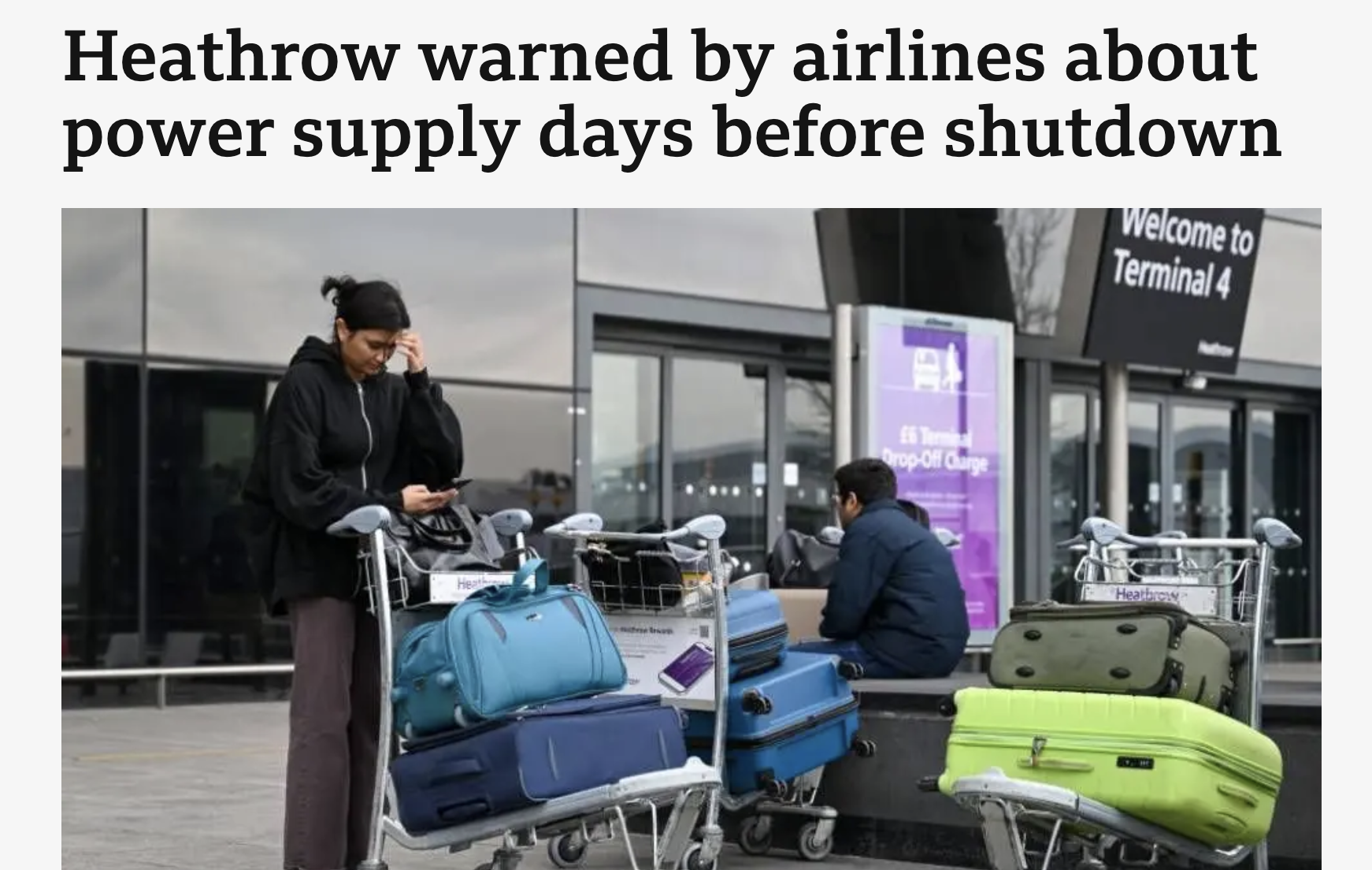The recent fire at the North Hyde electrical substation in Hayes, which led to a complete shutdown of Heathrow Airport on March 21, 2025, ignited a comprehensive debate regarding the resilience and preparedness of critical national infrastructure. This incident, affecting over 1,300 flights and hundreds of thousands of passengers, underscores significant vulnerabilities in the airport's operational framework.

Heathrow's Chief Executive, Thomas Woldbye, highlighted that while Heathrow invests approximately £135 million annually for a resilient power setup, creating an entirely fail-safe system would necessitate expenditures exceeding £1 billion—costs that airlines are unlikely to support. Woldbye stated, "Are we then also supposed to have a setup next to it? And then we would have to have a whole power station at the cost of billions to the airlines."
However, this stance has been met with scrutiny. Nigel Wicking, Chief Executive of the Heathrow Airline Operators' Committee, revealed that airlines had raised concerns about the airport's power supply resilience just days before the outage. These warnings were prompted by incidents such as cable theft, which had previously impacted power supply. Wicking suggested that better management of alternative power sources might have allowed for partial operations during the crisis.
Beyond Heathrow, the event has broader implications for the UK's national infrastructure. The reliance on single points of failure in critical systems has been highlighted as a significant risk, especially in an era where hybrid warfare tactics are a concern. Ensuring that infrastructure is robust enough to withstand both technological failures and potential attacks is paramount. The balance between the high costs of enhanced security measures and the potential economic and reputational damage from such disruptions remains a complex challenge for policymakers and industry leaders alike.
Final Thoughts...
In conclusion, the Heathrow power outage serves as a stark reminder of the vulnerabilities inherent in critical infrastructure.
It underscores the need for comprehensive risk assessments, substantial investment in resilience, and the implementation of robust contingency plans to mitigate the impact of unforeseen events on national and international scales.
